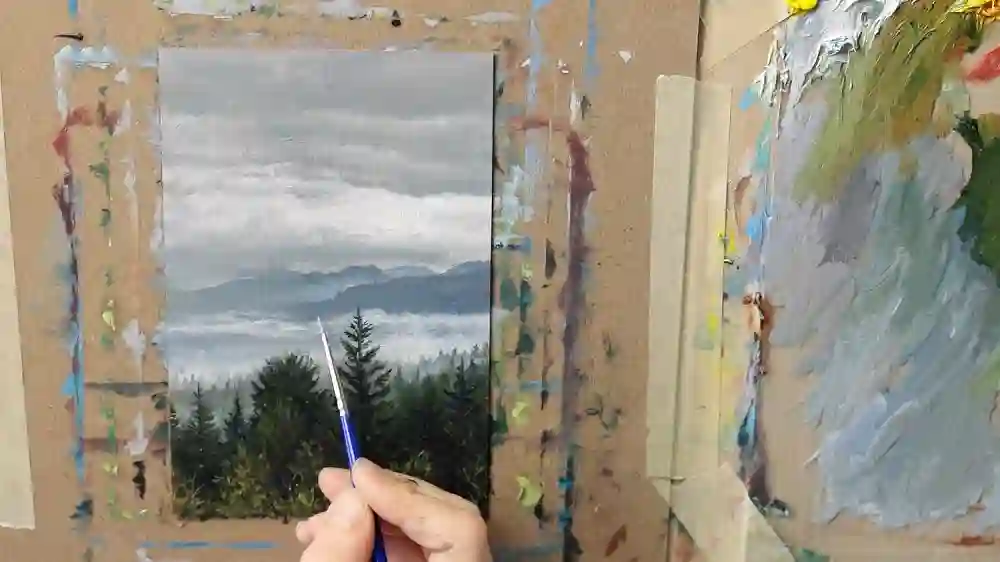Oil painting is renowned for its versatility and ability to convey depth, emotion, and drama. One technique that has been embraced by artists for centuries to achieve these qualities is the grisaille technique. Grisaille, derived from the French word “gris” meaning gray, involves painting in shades of gray, often using a monochromatic palette. This technique not only adds drama and depth to oil paintings but also serves as a foundation for later color layers. In this article, we will explore the art of mastering the grisaille technique and how it can enhance your oil paintings.
Understanding the Grisaille Technique
Grisaille is a painting technique that employs a limited palette of grayscale colors, usually ranging from pure white to deep black, with various shades of gray in between. While it may seem counterintuitive to use a grayscale approach in a colorful medium like oil painting, grisaille serves several essential purposes:
- Establishing Tonal Values: Grisaille allows artists to focus solely on tonal values, helping to create a strong sense of light and shadow in the artwork. This is particularly crucial for achieving realism and depth.
- Developing Form and Structure: By working with grayscale, artists can concentrate on the form and structure of the subject, making it easier to capture three-dimensional qualities.
- Creating Dramatic Effects: Grayscale paintings often exude a sense of drama and mood, making them suitable for subjects that require a strong emotional impact.
- Preparing for Color Layers: Grisaille serves as an underpainting layer, providing a foundation upon which transparent and semi-transparent color glazes can be applied. This layering technique enhances the luminosity and depth of the final painting.
Materials for Grisaille Painting
Before delving into the technique itself, it’s essential to gather the right materials:
- Canvas or Panel: Choose a suitable canvas or panel to work on. Ensure it is properly primed for oil painting.
- Oil Paints: Select high-quality oil paints in various shades of gray. Titanium white, ivory black, and a range of grays are common choices.
- Brushes: Use brushes appropriate for oil painting. Rounds, flats, and filberts in various sizes are essential for achieving different textures and details.
- Medium: A compatible medium, such as odorless mineral spirits or linseed oil, is needed to adjust the consistency of your paint.
- Palette: Use a palette with ample space for mixing and arranging your grayscale colors.
Steps for Mastering the Grisaille Technique
- Sketch and Composition: Begin with a detailed sketch of your subject on the canvas. Plan the composition, focusing on the arrangement of light and dark areas.
- Choose Your Grays: Mix various shades of gray using the white and black oil paints on your palette. These grays will serve as your tonal values.
- Block In Tonal Values: Apply the darkest gray tones first, focusing on the areas of deepest shadow. Gradually work your way to lighter grays and eventually white for the highlights. Use soft, controlled brushwork to create smooth transitions between values.
- Focus on Form: Pay attention to the form and structure of your subject. Use your grayscale palette to create the illusion of three-dimensionality by defining highlights, shadows, and mid-tones.
- Texture and Detail: Experiment with brushwork to create texture and detail in your grisaille painting. Different brush techniques can convey various textures, from soft to sharp.
- Layering: Allow each layer of gray to dry before adding subsequent layers. This layering technique allows for adjustments and refinements, enhancing the depth of your painting.
- Glazing: Once the grisaille layer is complete and thoroughly dry, you can apply transparent or semi-transparent color glazes on top. These glazes will interact with the grayscale underpainting to create vibrant, luminous colors.
Tips for Mastering Grisaille
- Practice Patience: Grisaille painting requires patience and attention to detail. Take your time to achieve smooth transitions and accurate tonal values.
- Study Lighting: Understanding how light interacts with your subject is crucial. Study the play of light and shadow in real life and in the works of master painters.
- Experiment with Techniques: Grisaille can be applied using various techniques, including wet-on-wet, scumbling, and layering. Experiment to find the one that suits your style and subject.
- Reference and Observation: Work from life or use high-quality reference photos to ensure accuracy in your grisaille painting.
- Don’t Rush to Color: Resist the urge to rush into adding color layers. A well-executed grisaille underpainting sets the stage for more vibrant and realistic colors.
Conclusion
Mastering the grisaille technique in oil painting is a rewarding endeavor that can add depth, drama, and realism to your artwork. This grayscale foundation allows artists to create strong tonal values, develop form and structure, and ultimately enhance the final painting with color glazes. By understanding the principles of light and shadow, practicing patience, and experimenting with techniques, artists can harness the power of grisaille to elevate their oil paintings to new heights. Whether you’re aiming for dramatic portraiture, captivating still life, or evocative landscapes, mastering the grisaille technique is a valuable skill in your artistic journey.














